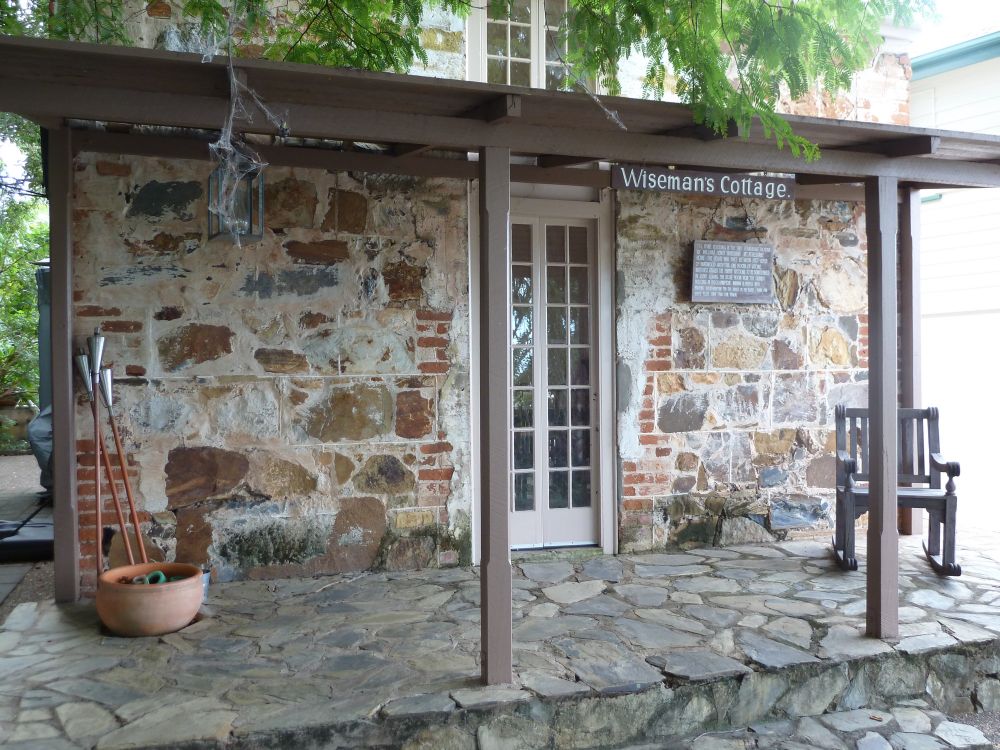After arriving in Sydney in 1840, William Wiseman (1808 – 1871) travelled north, firstly to the Darling Downs and then to the Capricorn region. Here he played a pivotal role in the early development of Rockhampton and surrounding districts. He was highly respected for his work as Crown Lands Commissioner for the Leichhardt Pastoral District and for his contribution to the Rockhampton Benevolent Society and the Rockhampton School of Arts, both of which were among the earliest community organisations founded in regional Queensland.
Wiseman was born in London in 1808. Not much is known of his early life but as a young man he graduated with a Bachelor of Arts from Balliol College, Oxford in 1829 and spent time in Germany and Italy in the company of his friend, Dr. Stephen Simpson. When Simpson and his wife Sophia migrated to New South Wales, Wiseman decided to accompany them. The group sailed to Sydney aboard the Wilmot, arriving in 1840. When Simpson’s wife and newborn child died in May of the same year, Wiseman and Simpson successfully sought permission to travel to the Moreton Bay settlement to make a fresh start. In July 1840, they boarded the Speculator and sailed north.
On their arrival they found accommodation in what had previously been the female convict quarters at Eagle Farm. Two years later, Simpson was appointed as Crown Lands Commissioner for the Moreton District and established his base at Woogaroo Creek. Wiseman commenced work as his assistant before heading to Drayton where he became Clerk of Petty Sessions. It was at this time that he became acquainted with Charles and William Archer who had established a property known as Durundur, near Woodford. The Archers had formed a friendship with the explorer Ludwig Leichhardt who had alerted them to the potential of good grazing land further north. In 1853 the Archer brothers began to explore beyond the northern limits of settlement, discovered the Fitzroy River and selected a property they called Gracemere. Wiseman followed shortly after and set up camp in a tent on Rannes station established in in the same year by the James and Norman Leith-Hay on land near Westwood.
As more pastoralists moved north, the New South Wales Government proclaimed the new Pastoral District of Leichhardt. In January 1854, Henry Masters was appointed Crown Lands Commissioner. However, neither he nor his successor, Henry Gardiner were able to withstand the rigours of life on the frontier. Henry Wiseman was subsequently appointed in December 1854 and held the position until he was appointed as Police Magistrate for Rockhampton in 1864.
Wiseman had been searching for a suitable location to establish a Court of Petty Sessions but no township had been established in the area. When the Government asked Wiseman to find a suitable site, he, together with Charles Archer, decided that the township should be located on the Fitzroy River where a bar of rocks indicated the limit of navigation upstream. They named the township Rockhampton. Wiseman moved to the new town and built a house he called Mount Athelstane on what later became known as the Athlestane Range, west of the main settlement.
As Crown Lands Commissioner, Wiseman controlled an area which stretched from the Fitzroy River in the east to Lake Salvator in the west and from the Isaac River in the north to Taroom in the south. He undertook a number of long and arduous treks through dense and inhospitable terrain firstly to report on suitable grazing lands and to survey the area for subdivision and later to maintain law and order and to ensure that pastoralists were abiding by the terms of their leases. One such journey took him across the Bigge and Expedition Ranges to report on runs near the Comet River. These duties meant that he was absent from his camp for three months at a time and on his return he was faced with a backlog of correspondence and reports demanded by the Chief Commissioner of Crown Lands, George Barney, in Sydney.
Despite the demands of his position, Wiseman found time to give lectures at the School of Arts founded in 1861 and to assist with the operation of the Rockhampton Benevolent Society which was formed in 1866 to provide relief to the less fortunate in the rapidly growing community. Wiseman was highly respected both as Crown Lands Commissioner and Police Magistrate and worked tirelessly to improve conditions for residents. The many hardships and privations he endured eventually affected his health and led to his death from heart disease at the age of 63. He was buried in the Church of England section of the South Rockhampton Cemetery on 5 September 1871.
The Rockhampton Municipal Council named a street in the suburb of The Range in Wiseman’s honour and the storehouse attached to his original home at 30 Nathan Street, The Range still stands. It was added to the Queensland Heritage Register in 1992.
Citation
Margaret Shield, ‘William Wiseman (1808 – 1871)’, Harry Gentle Resource Centre, Griffith University, 2018, https://harrygentle.griffith.edu.au/life-stories/william-wiseman/.
Archival Resources
Queensland State Archives, Letterbook (W. H. Wiseman), Item ID ITM7203
Letterbook of W.H. Wiseman, Crown Lands Commissioner, 5 Feb 1855 to 3 May 1860.
Books
Gerry Langevad, Guide to the Letterbook (1855-1860) of William H. Wiseman, Commissioner of Crown Lands for the pastoral district of Leichhardt.
Brisbane: Department of Community Services, 1986.
Lorna McDonald, Rockhampton: A History of City and District.
St Lucia, Qld: University of Queensland Press, 1981.
Rod Fisher and Jennifer Harrison (eds), Brisbane: Squatters, Settlers and Surveyors.
Kelvin Grove, Qld: Brisbane History Group, Papers No. 16, 2000.
Newspapers
Petty Sessions, Moreton Bay Courier, 22 Oct 1853.
Death, Rockhampton Bulletin and Central Queensland Advertiser, 5 Sep 1871.
The late Mr. W. H. Wiseman, The Capricornian, 10 Aug 1918, p. 40.
Early Settlers: The Leith-Hays and Rannes Station, Central Queensland Herald, 14 July 1949, p. 3.





